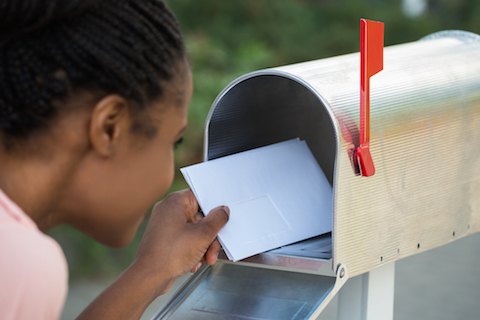
Andrey_Popov / Shutterstock.com
Early action (EA) is an admissions policy that allows prospective freshmen to get a head start on the college application process. By submitting EA applications well before the regular application deadline, you can receive your admissions decision (an acceptance, a rejection, or a maybe) in December of your senior year.
Early action is often confused with early decision (ED), but the two aren’t the same. ED admissions are binding, meaning that if you apply to a certain school and gain admission, you must attend. Critics of ED policies say that they favor privileged students (those who can commit to attending a school without seeing their financial aid offers first).
Early action is different. EA decisions are nonbinding, so you are under no obligation to commit to a certain school if you are accepted. This means that you can apply to more than one school EA or you can apply regular decision to other schools even if you are accepted somewhere EA.
If you have narrowed down your college search and have taken standardized tests early, you might consider applying EA to one (or all!) of the schools on your college short list. Here’s why:
1. Perfect your college application early.
Even if you aren’t accepted early action, you will have your college essay done early (of course, you’ll need to tweak it a little for each school). Your letters of recommendation will already be written, so if you decide to apply regular decision after applying EA, you’ll just have to ask teachers to send them out again. You’ll know the process of requesting transcripts from your high school, and you’ll have finished with the SAT or ACT. In some cases, you’ll already have filled out your personal info on the Common App. Applying to additional colleges regular decision, if need be, will be easy!
2. Better your chances of getting accepted to your first-choice school.

Undrey / Shutterstock.com
If you look at admissions statistics, you might see that colleges accept a higher percentage of EA candidates than regular admission candidates. The truth is, talented and focused students tend to apply early, which could be skewing these percentages. Still, applying early could increase your chances of admission to a certain school if you have taken the necessary steps to ensure you are a competitive applicant. And if you are waitlisted after applying EA, you do have another shot at admission: Your application is pushed into the pile of regular decision applications, so it will be reviewed by the admissions committee a second time.
3. Have the college application process over early.
If you are accepted EA to your first-choice college, then you might decide you’re finished with the whole application process (which also means that you don’t have to pay any additional application fees!). If you were accepted EA to your dream school and received an adequate financial aid offer, you have nothing to worry about now except finishing high school strong. Congratulations!
4. Apply to more than one school (possibly).
Most admissions policies do not limit the number of schools to which you can apply EA. These are called nonrestrictive policies, and they are unlike restrictive ED policies. You are only permitted to apply to one school ED (since the commitment is binding if you are accepted), but you can apply EA to as many schools as you’d like. You can often even apply EA to multiple schools if you applied ED to one (you will just need to withdraw your EA applications if you are accepted to your ED school).
5. Never feel stuck if you change your mind.
Because EA decisions are nonbinding, you don’t have to actually attend any of the EA schools that have accepted you. Maybe you applied EA to a few schools you liked, but your dream school didn’t offer EA admissions opportunities, so you plan on applying regularly and using your EA schools as backup. Maybe you applied EA to what you thought was the school of your dreams only to find another school you liked better. That’s totally fine! With EA admissions, you will not be chained to any school until you accept an admissions offer. Still, it’s nice to know that there is a place where you could fit. It definitely increases self-confidence when you are accepted to a college, and it helps you feel like there is a light at the end of the dark college application tunnel.
6. Compare multiple financial aid packages.
This is huge. Maybe you applied EA to a certain school, received an acceptance letter, and noticed that the school offered you a dismal financial aid package. That’s always disappointing, but you have options. Apply to other schools regular decision. Come April or May when application decisions are rolling in, you may have more than one admissions (and financial aid) offer to choose from.

Iakov Filimonov / shutterstock.com
7. Make plans early.
The college application process can be a whirlwind, so you might feel less panicked about the future if you can get the ball rolling early. And what a relief! If you apply early, you’ll have your admissions decision early, so you won’t be playing the stressful waiting game for as long. Plus, once you lock down your decision, you’ll have more time to think about housing, transportation, work-study, and other necessary prep work.
It isn’t hard to see that with early action, you don’t have anything to lose, except for application stress. Get your applications done early; you’ll be glad when you have an acceptance in hand.
-
Should You Take Any SAT Subject Tests?
-
Leaving Community College for a Four-Year School: All You Need to Know
-
December Checklist for Students Applying to College
-
Applying to College with a Disciplinary History or Criminal Record
-
Legacy Applicants and Legacy Students: An FAQ
-
What Are Colleges Looking for in Their Applicants, Really?
-
Help Your Child Apply to College without Over-Helping
-
The Lowdown on Test-Optional Colleges
-
You Are More than Your Test Scores
-
Three Things You Need to Know about College Admissions
-
A Quick and Easy Breakdown of the College Application
-
¿Qué certificación de inglés necesito?

